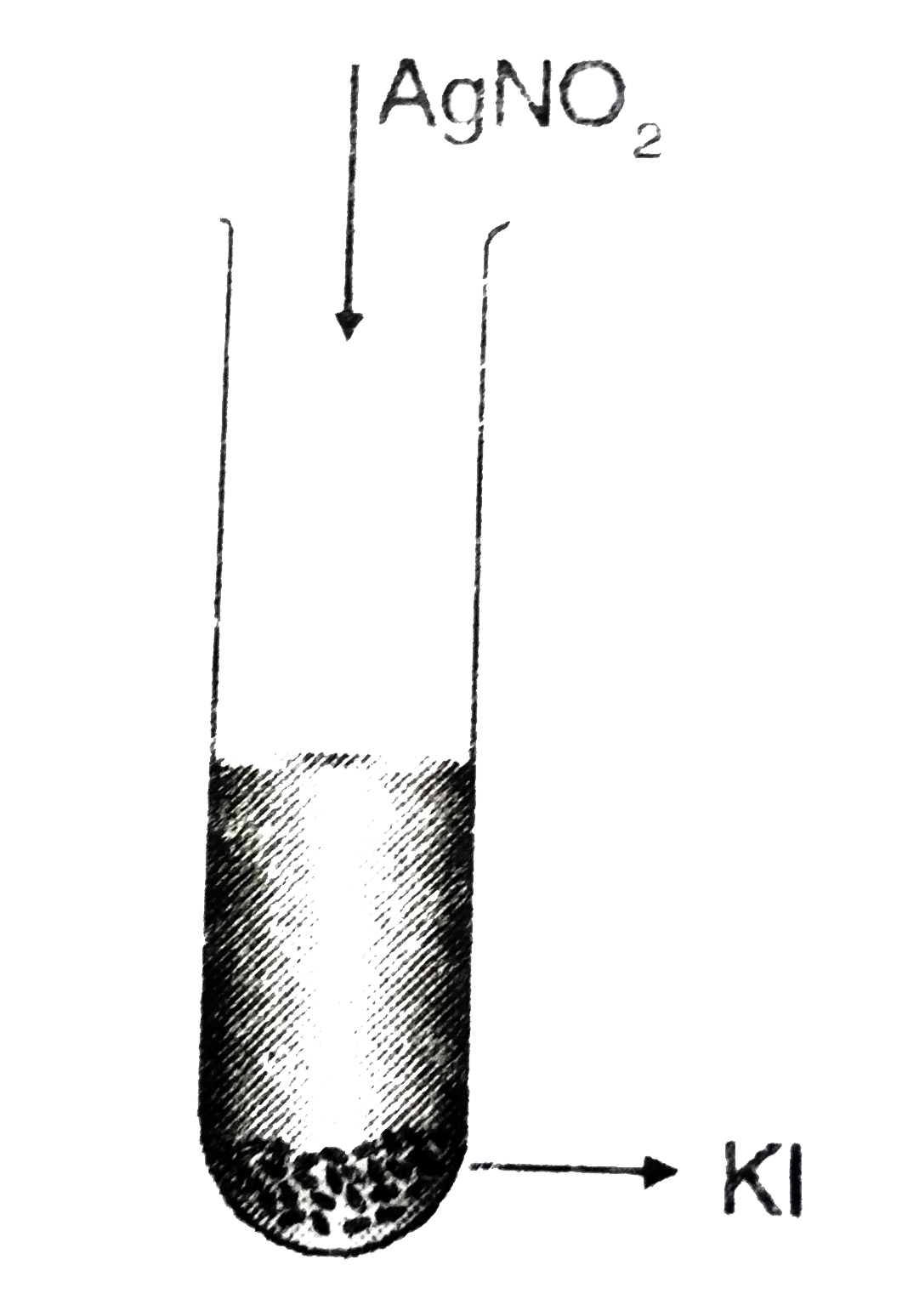Colloidal particles in soap sol carry
Negative charge
Positive charge
No charge
Either positive on negative charge
The correct Answer is:A
To solve the question regarding the charge of colloidal particles in soap sol, we can follow these steps:
1. Identify the Composition of Soap:
Soap is typically represented by the formula RCOONa, where R is a hydrocarbon chain. When soap is dissolved in water, it dissociates into two ions: RCOO⁻ (the soap anion) and Na⁺ (sodium cation).
Hint: Remember that soap molecules dissociate into anions and cations when mixed with water.
2. Understand the Behavior of Soap Ions:
The RCOO⁻ ions (carboxylate ions) are the key players here. These ions tend to aggregate to form structures known as micelles.
Hint: Micelles are formed by the aggregation of soap molecules in a solution, and they play a crucial role in the properties of soap.
3. Determine the Charge of the Micelles:
Since the micelles are formed from the aggregation of RCOO⁻ ions, they carry a net negative charge. This is because the RCOO⁻ ions are negatively charged.
Hint: Focus on the charge of the ions that make up the micelles to determine the overall charge.
4. Consider the Origin of the Charge:
The charge on colloidal particles can arise from the preferential adsorption of ions from the surrounding medium. In the case of soap, the presence of RCOO⁻ ions leads to a negative charge on the colloidal particles.
Hint: The charge on colloidal particles can often be attributed to the ions that are absorbed on their surface.
5. Conclusion:
Based on the above points, we conclude that the colloidal particles in soap sol carry a negative charge.
Final Answer: The colloidal particles in soap sol carry a negative charge.
Soap is typically represented by the formula RCOONa, where R is a hydrocarbon chain. When soap is dissolved in water, it dissociates into two ions: RCOO⁻ (the soap anion) and Na⁺ (sodium cation).
The RCOO⁻ ions (carboxylate ions) are the key players here. These ions tend to aggregate to form structures known as micelles.
Since the micelles are formed from the aggregation of RCOO⁻ ions, they carry a net negative charge. This is because the RCOO⁻ ions are negatively charged.
The charge on colloidal particles can arise from the preferential adsorption of ions from the surrounding medium. In the case of soap, the presence of RCOO⁻ ions leads to a negative charge on the colloidal particles.
Based on the above points, we conclude that the colloidal particles in soap sol carry a negative charge.
Topper's Solved these Questions
- SURFACE CHEMISTRY BOOK - AAKASH INSTITUTE ENGLISHCHAPTER - SURFACE CHEMISTRY EXERCISE - Assignment Section - B (Previous year questions)
14 Videos
- SURFACE CHEMISTRY BOOK - AAKASH INSTITUTE ENGLISHCHAPTER - SURFACE CHEMISTRY EXERCISE - Assignment Section - B (Questions asked prior to medical Ent . Exams . 2005)
10 Videos
- SURFACE CHEMISTRY BOOK - AAKASH INSTITUTE ENGLISHCHAPTER - SURFACE CHEMISTRY EXERCISE - Exercise
20 Videos
- STRUCTURE OF ATOM BOOK - AAKASH INSTITUTE ENGLISHCHAPTER - STRUCTURE OF ATOM EXERCISE - ASSIGNMENT ( SECTION -J) Aakash Challengers Questions
12 Videos
- TEST 1BOOK - AAKASH INSTITUTE ENGLISHCHAPTER - TEST 1EXERCISE - EXAMPLE
134 Videos
Similar Questions
Knowledge Check
In these colloids , a large number of small atoms or smaller molecules of a substance aggregate to form colloidal particles having size in colloidal range. These colloids are known as
Amultimolecular colloidsBmacromolecular colloidsCassociated colloidsDlyophilic colloids
Assertion :- Filtration of colloidal particles is not possible by filter paper.
Reason :- Size of colloidal particle is less than filter paper pores.
View SolutionThe extent of scattering shown by colloidal particles is inversely proportional to
View SolutionWhat is the charge on the colloidal particles in the following ?
a. Fe(OH)3 sol
b. As2S3 sol
c. Colloidal sol of sillver
View SolutionColloidal particles carry charge is best shown by:
View Solution(a) A colloidal sol is prepared by the given method in figure. What is the charge of AgI colloidal particles in the test tube ? How is the sol formed, represented?
 (b) Explain how the phenomenon of adsorption finds application in Heterogeneous catalysis.
(b) Explain how the phenomenon of adsorption finds application in Heterogeneous catalysis.
(c) Which of the following electroytes is the most effective for the coagulation of Fe(OH)3 sol which is a positively charged sol?
NaCI,Na2SO4,Na3PO4
View SolutionThe electrical charge on the the colloidal particles is indicated by
View SolutionThe separation of colloidal particles from electrolyte particles by use of a filter paper is called
View Solution
